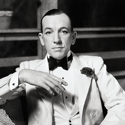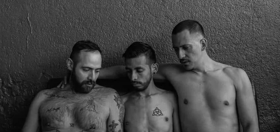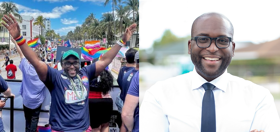 Jo Becker’s new book, Forcing the Spring, tells the story of AFER’s role in overturning Prop 8. Like the subjects of the book, there’s been a lot of conversation and controversy about it since it came out; and if you want to explore that controversy, there is no shortage of conversation in which you can participate.
Jo Becker’s new book, Forcing the Spring, tells the story of AFER’s role in overturning Prop 8. Like the subjects of the book, there’s been a lot of conversation and controversy about it since it came out; and if you want to explore that controversy, there is no shortage of conversation in which you can participate.
Queerty contributor and former AFER staffer Matt Baume asked Jo about her writing process. Like Becker, Matt is also writing a book about marriage equality.
Jo Becker’s research began with a single article for the New York Times, five years ago. It was a profile of Ted Olson, around the time that Olson and David Boies faced a crucial hearing in the case.
“It was, I thought, a really important moment in this fight,” Becker now recalls. “I wanted to know how that came about. … After doing the story I found I couldn’t let it go.”
How about we take this to the next level?
Our newsletter is like a refreshing cocktail (or mocktail) of LGBTQ+ entertainment and pop culture, served up with a side of eye-candy.
At the time, the federal lawsuit was a surprising. In May, the same week that AFER announced its case, a coalition of leading LGBT organizations had put out a statement entitled “Why the ballot box and not the courts should be the next step on marriage in California.” Many other organizations had signed a statement called “Prepare to Prevail,” advocating a public education campaign instead of an immediate ballot measure. The game plan at that point was to spend a few more years conducting public outreach to create a climate in which the country — including the courts — would feel comfortable ruling in favor of equality.
“I’ve always been fascinated by the civil rights fight,” says Becker. “So I approached Ted Olson, who I knew from covering the [Bush v. Gore] recount, and I said I’d love to do a book about this case.”
 But doing so would require more openness than lawyers generally tolerate. “I would need to be able to be in the room as strategy is plotted,” Becker told Olson. In retrospect, she later recalls, “honestly I thought they would say no.”
But doing so would require more openness than lawyers generally tolerate. “I would need to be able to be in the room as strategy is plotted,” Becker told Olson. In retrospect, she later recalls, “honestly I thought they would say no.”
But they didn’t, and Becker joined the team as a quiet background observer. She had a rare opportunity to document a civil rights case as it happened, rather than piecing together oral histories after the fact, and Becker was able to note minute details.
For example, she noticed, the gay lawyers on the team brought a unique perspective. When the legal team was compiling a reel of evidence about the Prop 8 campaign, she recalled a disagreement about whether an a particular ad displayed animus.
“Think it can’t happen? It’s already happened,” a narrator warned, in reference to first graders attending a lesbian wedding.
“I don’t know about that one,” said one of the straight lawyers, pointing out that first graders don’t really learn about straight weddings, either. Becker recalls that all of the gay lawyers snapped to attention at that claim, and were quick to refute it: of course kids learn about straight weddings. In fairy tales, in play activities and from adults around them, the gay lawyers were acutely aware of heteronormativity instilled since childhood.
“If I hadn’t been there,” Becker says, “nobody would probably even remember, because there was so much going on every single day.”
There were other important moments. “I remember the agony that the plaintiffs went through while the Supreme Court was deciding whether to take their case,” she says. “Everybody would get together and refresh SCOTUSblog like crazy, and the court would do nothing. And everybody would just deflate and go home. … Kris [Perry] was just really tense. … They kept having to send out save-the-dates, because had the Supreme Court denied cert, they would have gotten married right away.”
Becker took a year off of work at the Times to write the book. When she started, “I didn’t know what the arc would be.” It was an unpredictable case, with frequent last-minute twists.
 “I can remember getting word that Judge Walker was going to issue his opinion the following day at one o’clock,” she says. “I don’t think I got word about that until … 8 or 9 o’clock at night.” She raced around her home, packing and searching frantically for a flight. “I could not get on a flight that night, and had to take a flight out that morning, and just pray that it wasn’t delayed. … I got there in time, and was there as the plaintiffs were called in to talk to the lawyers.” She watched the attorneys deliver news of the win to the plaintiffs in a private conference room, with the rest of the AFER team outside pressing ears against the door.
“I can remember getting word that Judge Walker was going to issue his opinion the following day at one o’clock,” she says. “I don’t think I got word about that until … 8 or 9 o’clock at night.” She raced around her home, packing and searching frantically for a flight. “I could not get on a flight that night, and had to take a flight out that morning, and just pray that it wasn’t delayed. … I got there in time, and was there as the plaintiffs were called in to talk to the lawyers.” She watched the attorneys deliver news of the win to the plaintiffs in a private conference room, with the rest of the AFER team outside pressing ears against the door.
Of course, that victory was followed by years of ongoing litigation. It wasn’t until 2013 that the Supreme Court would uphold AFER’s victory. And then a few days later, unexpectedly, the Ninth Circuit ruled that marriages could begin immediately.
“When everybody got word that weddings might resume at 3 p.m. … I had thought it was going to be kind of a down day, like nothing was going to happen that day. I was literally at a hair salon in West Hollywood getting my hair blown out when my phone buzzed.” Becker told her stylist, “if you can get my hair dried, great. If not I have to leave anyway.”
 Looking back now, Becker says that AFER had a unique role in the ecosystem of people and organizations working towards the freedom to marry. Back in 2009, she remembers, “they were newcomers…and they were bucking the establishment at the time.” (But they were only bucking it by a few years; the established organizers like GLAD and Freedom to Marry had always planned on taking a case to the Supreme Court when the time was right.)
Looking back now, Becker says that AFER had a unique role in the ecosystem of people and organizations working towards the freedom to marry. Back in 2009, she remembers, “they were newcomers…and they were bucking the establishment at the time.” (But they were only bucking it by a few years; the established organizers like GLAD and Freedom to Marry had always planned on taking a case to the Supreme Court when the time was right.)
One of AFER’s big advantages was having Ted Olson on board. With him came lots of new Republican allies, including former Bush Campaign Manager Ken Mehlman.
According to Becker, Mehlman came out specifically to join AFER’s board because of Olson’s involvement. Later, he would be instrumental in helping to rounding up Republican votes for the repeal of Don’t Ask Don’t Tell. “He was also was someone who opened up a huge new spigot of Republican money that was quite instrumental in the passage of marriage equality in New York,” she says.
AFER also established “war rooms” to conduct outreach to the media. By the time the Prop 8 case reached the Supreme Court, that war room encompassed AFER and the Human Rights Campaign, and “had presidential-campaign-level operatives working in it,” Becker recalls.
That media focus had a significant impact, even on the Prop 8 proponents. In her book, Becker reveals that Prop 8 attorney Chuck Cooper learned his stepdaughter is gay while he was litigating the case. “He talked about how moving it was, listening to [AFER plaintiffs] Kris and Sandy testify. So much so that when they got married, he watched it all unfold on TV in shock … but he said he couldn’t help but rejoice in their happiness.”
“When you know someone and you hear their stories, just like Chuck Cooper, it sort of reframes it for you,” Becker says.
Now, with marriage won in seventeen states and public support steadily climbing, gay couples face a changed world. It’s one in which the fight for marriage equality is woven inextricably into our relationships.
After New York passed its marriage equality bill, Becker and her husband attended a wedding for a colleague at the New York Times. Among the passages read by the officiant: the text of the state’s newly inclusive marriage law.


















Cam
Is it any coincidence that Jo Beckers book, which attempts to wipe the history of the gay rights movement away and pretend that everything having to do with Marriage focuses on Chad Griffin, who has since become the head of HRC? HRC has been repeatedly accused of caring more about getting credit than in actually pushing for gay rights.
The NYTimes, Beckers own employer had this to say about the book.
“More troubling, she suggests that earlier advocates of marriage equality had toiled in fruitless obscurity until this glamorous dream team swept in. It’s a bizarre premise, since by the time the Perry case went to court, same-sex marriage had been fought for successfully in six states and the District of Columbia.”
NYMagazine had this to say.
“For a journalist to write a book that says, in essence, that the struggle for marital equality “had largely languished in obscurity” until 2008 and the battle over Proposition 8 in California is tantamount to saying that the black-civil-rights struggle didn’t get going until President Obama was elected president that same year.”
It was actually U.S. v. Windsor that got the verdict that has been moving gay rights the most through the court, not the Prop 8 case, but Becker barely mentions that case.
Once again, HRC desperately trying to make sure that all credit goes to them even though multiple states already had legal marriage due to multiple cases, some that HRC actually tried to prevent from going to court in the first place.
But then again, the head of HRC used to be a publicist so I guess we should not be surprised that he is getting what he most wants. Publicity.
rextrek
Meanwhile – Our neighbors to the North LAUGH at America – and it’s Hypocritcal creeds about Liberty this, and Freedom that…all BULLSHIT….MILLIONS being spent on state by state crap….when these RIGHT(S),should be OURS to begin with…..while we await “permission” from the heterosexuals…..this country makes me sick.
Mezaien
@rextrek: Yes how more right can you be! and just to remind you! religions IS Democracy enemy #1.
Cam
@rextrek:
Then again if you’ve ever met Canadians they would be much more polite and simply say they were disappointed in us. lol
1EqualityUSA
“A Just Cause: Law, Love, and the Case for Marriage Equality” by Ted Olson and David Boise is going to be good. (Viking Press) My spouse and I will be seeing them speak at the end of June. The Windsor case was a huge milestone too, so anything written by Roberta Kaplan would be lovely. Equality has been a collective effort. I appreciate all of the everyday commenters that have taken the time to write their experiences, refute BS’ers, and think aloud for others to take in.
Cam, I never tire of your comments.